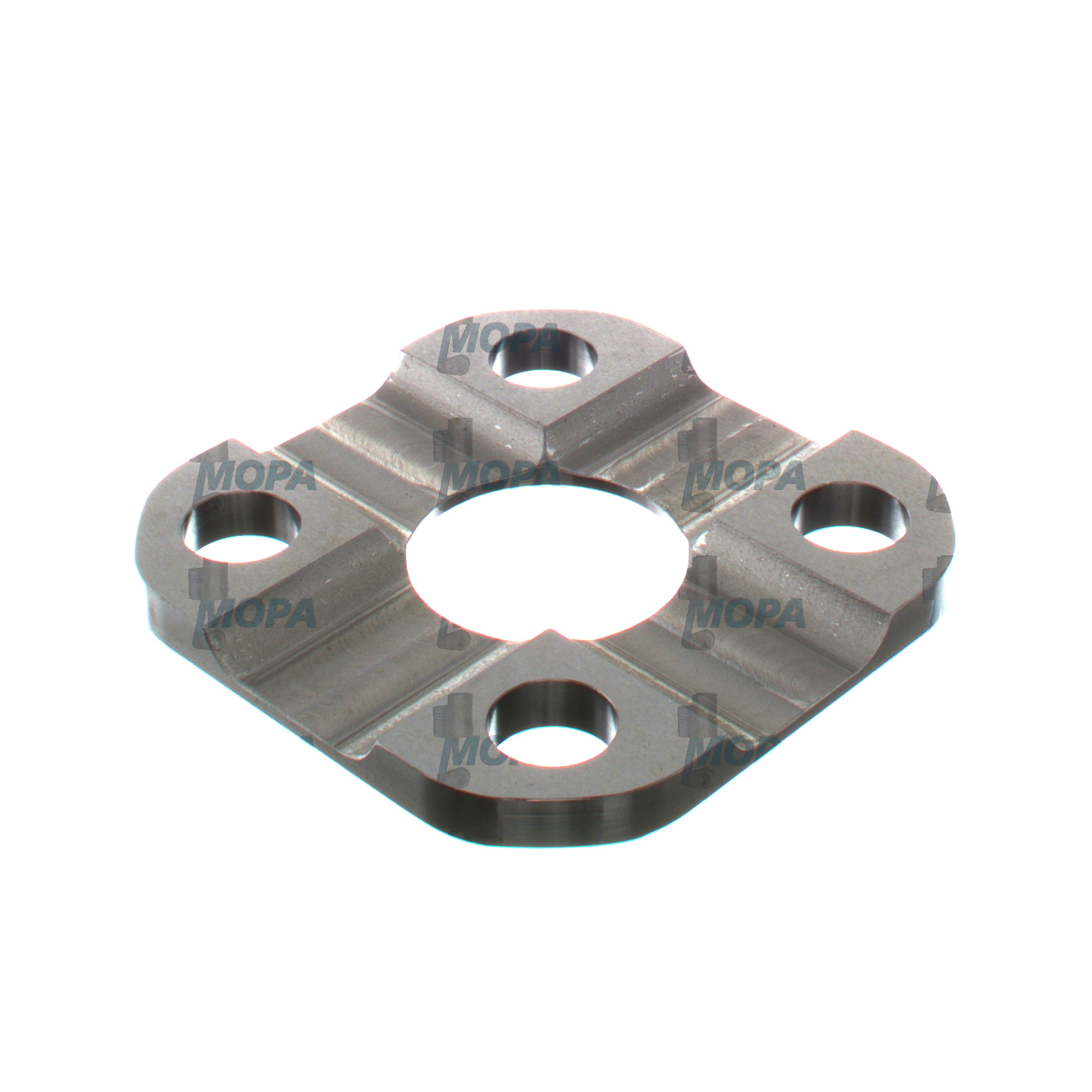CLUTCH DISC and Clutches for Heavy-Duty Marine and Industrial Engines
Clutches are precision torque-control assemblies that connect and disconnect the power flow between an engine and the driven system. In marine propulsion, auxiliary drives, and industrial generator sets, clutches ensure smooth engagement, protect drivetrain components from shock loads, and enable controlled power transfer under changing operating conditions. Within this assembly, the CLUTCH DISC is the primary friction element that defines how reliably and efficiently torque is transmitted. For shipowners, fleet managers, and technical buyers, selecting the right clutch configuration is central to performance, safety, and lifecycle cost.
Whether installed behind a high-torque diesel engine, integrated into a marine gearbox, or coupled to a power take-off for pumps and compressors, modern clutches are engineered to handle demanding duty cycles, frequent starts, and harsh environments. Material choice, damper design, clamp load, and thermal capacity all determine how effectively the CLUTCH DISC and its companion components perform in real-world operation.
Technical function of clutches and the CLUTCH DISC in a diesel engine
A clutch couples the flywheel of the engine to the input shaft of the transmission or driven equipment. The CLUTCH DISC sits between the flywheel and the pressure plate, its friction linings designed to grip under clamp load while dissipating heat generated during engagement. A diaphragm or lever-spring pressure plate applies controlled force; a release mechanism—mechanical, hydraulic, or pneumatic—reduces this force to disengage the drive. In a diesel engine with high torsional pulses, the hub of the CLUTCH DISC typically integrates damper springs or rubber elements to attenuate torsional vibration, protecting gears, bearings, and couplings downstream.
In marine engine applications, clutches may be single-plate dry types for direct drives or multi-plate wet designs immersed in oil for higher thermal stability and compact packaging. Friction materials range from organic and aramid fibers to sintered bronze or ceramic blends, chosen to balance coefficient of friction, fade resistance, and wear rate. Balanced assemblies, precision-machined splines, and flatness-controlled plates maintain smooth engagement and reduce runout, minimizing chatter and uneven wear. Properly specified, a CLUTCH DISC for marine engine duty handles repeated low-speed maneuvering, harbor operations, and emergency reversals without excessive heat spots or glazing.
- · High torque transmission with controlled slip during engagement.
- · Torsional damping in the CLUTCH DISC hub to reduce vibration and gear rattle.
- · Thermal capacity sized for start-stop and maneuvering cycles.
- · Friction linings engineered for consistent coefficient and low fade.
- · Precision clamp load and release characteristics for smooth operation.
- · Corrosion-resistant hardware and balanced components for long service life.
- · Compatibility with marine engine, diesel engine, and industrial drive interfaces.
Why Clutches and the CLUTCH DISC matter for engine reliability
Clutches directly influence engine and drivetrain reliability. A properly functioning CLUTCH DISC cushions torsional spikes at idle and during load steps, reducing stress on crankshaft, bearings, and gear teeth. Clean, predictable engagement protects shaft seals, couplings, and PTO equipment, while stable friction properties help keep start-up times short and repeatable—critical for vessel maneuverability and generator load acceptance.
When clutches wear or fall out of specification, several issues can arise: slipping under load increases fuel consumption and thermal stress; uneven contact surfaces cause judder and localized hot spots; worn damper springs amplify vibration, accelerating wear on gearboxes; oil contamination (from a rear main seal, for example) degrades the friction lining; warped plates elevate runout and cause noisy engagement; and damaged splines introduce backlash that compromises control. Left unaddressed, these conditions can lead to loss of propulsion, unscheduled downtime, higher maintenance costs, and safety risks during critical operations.
Routine inspections should include lining thickness, rivet head depth, pressure plate finger height, release bearing condition, runout checks, and evidence of heat discoloration. For marine engine clutches, confirm correct actuation pressure in hydraulic systems and verify cooling oil flow for wet units. Matching the CLUTCH DISC characteristics to the engine’s torsional signature and duty profile is essential to avoid resonance and premature wear.
Advantages of OEM spare parts suitable for Clutches and CLUTCH DISC assemblies
Choosing OEM spare parts suitable for clutches ensures that friction compounds, damper rates, and dimensional tolerances align with the engine maker’s targets and drivetrain geometry. This delivers predictable engagement, stable torque capacity, and consistent vibration control across the service interval. Because the CLUTCH DISC OEM parts are validated as a system—disc, pressure plate, release components—drop-in fit reduces installation time and the risk of misalignment.
From a lifecycle perspective, the right OEM spare parts suitable for clutches lower total cost by extending lining life, reducing heat-related failures, and safeguarding connected equipment. Traceable specifications, batch consistency, and balanced sets support reliability audits and classification requirements in the marine sector. For mixed fleets, standardized OEM selections help simplify inventory and streamline crew training.
Key benefits of OEM spare parts suitable for the CLUTCH DISC
- · Proven friction materials for diesel engine duty cycles.
- · Correct damper tuning to minimize torsional vibration.
- · Precise fit to flywheel, hub spline, and release system.
- · Consistent clamp load and thermal performance.
- · Reduced downtime through predictable installation.
- · Longer service life and lower lifecycle cost.
MOPA: fast, secure sourcing of CLUTCH DISC OEM parts for marine engine and gas/diesel applications
MOPA is an experienced and reliable partner for OEM spare parts Clutches. Our team supports shipowners, operators, and maintenance providers with rapid quotations, confirmed availability, and technically correct selections—whether you need a single CLUTCH DISC OEM parts kit for a diesel engine or a complete clutch assembly for a marine engine gearbox. We prioritize speed, quality, and security in the trade of OEM parts for diesel and gas engines, ensuring traceable documentation and smooth export handling.
Customers benefit from multi-brand expertise, precise cross-references, and proactive logistics. From class-compliant documentation to coordinated dockside deliveries, MOPA streamlines procurement so your assets return to service faster with parts that match the specified performance envelope.
Conclusion: Clutches and the CLUTCH DISC
Clutches—and especially the CLUTCH DISC—are central to safe, efficient power transmission in marine and industrial engines. Correct specification and maintenance protect equipment, stabilize performance, and reduce operating cost. With OEM spare parts suitable for clutches, you secure consistent quality, dependable fit, and long service life—backed by MOPA’s speed and technical rigor.








